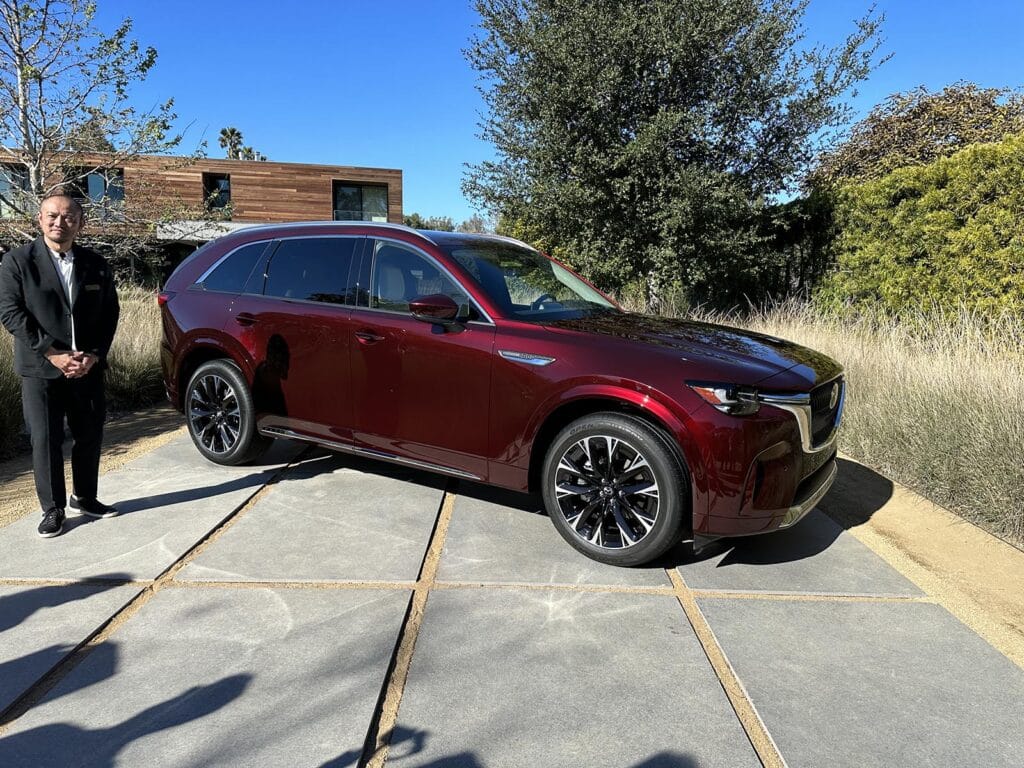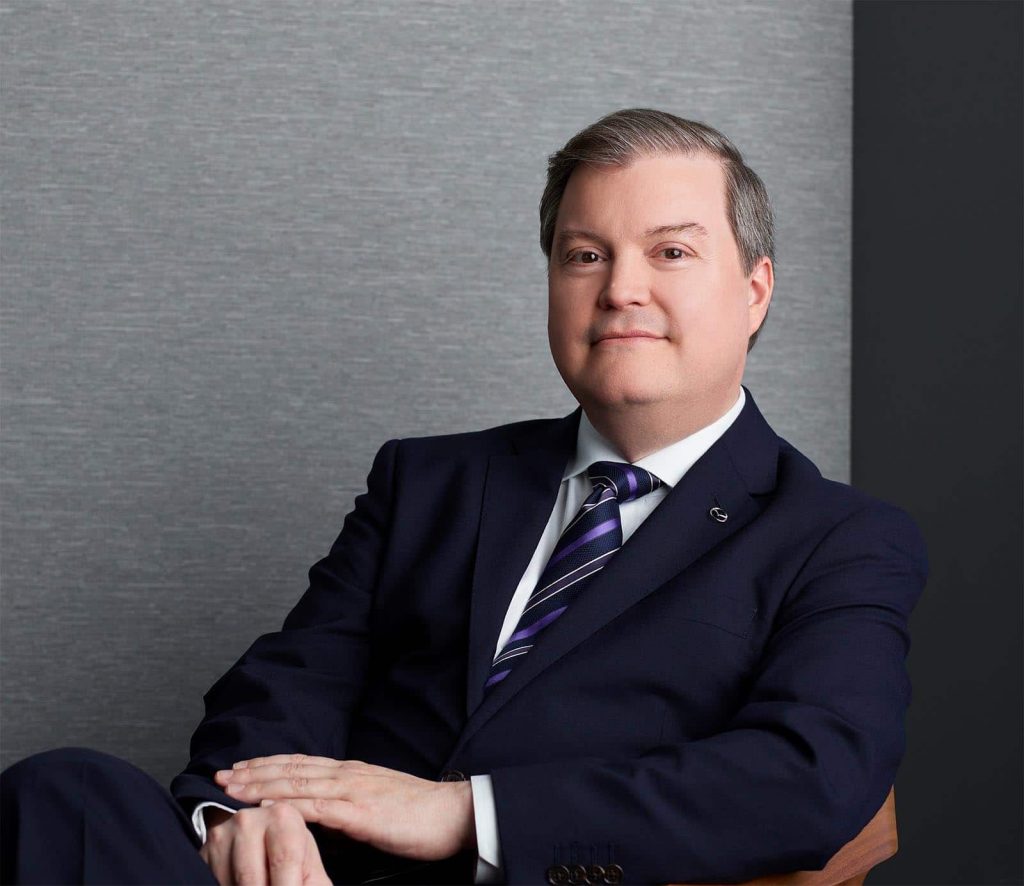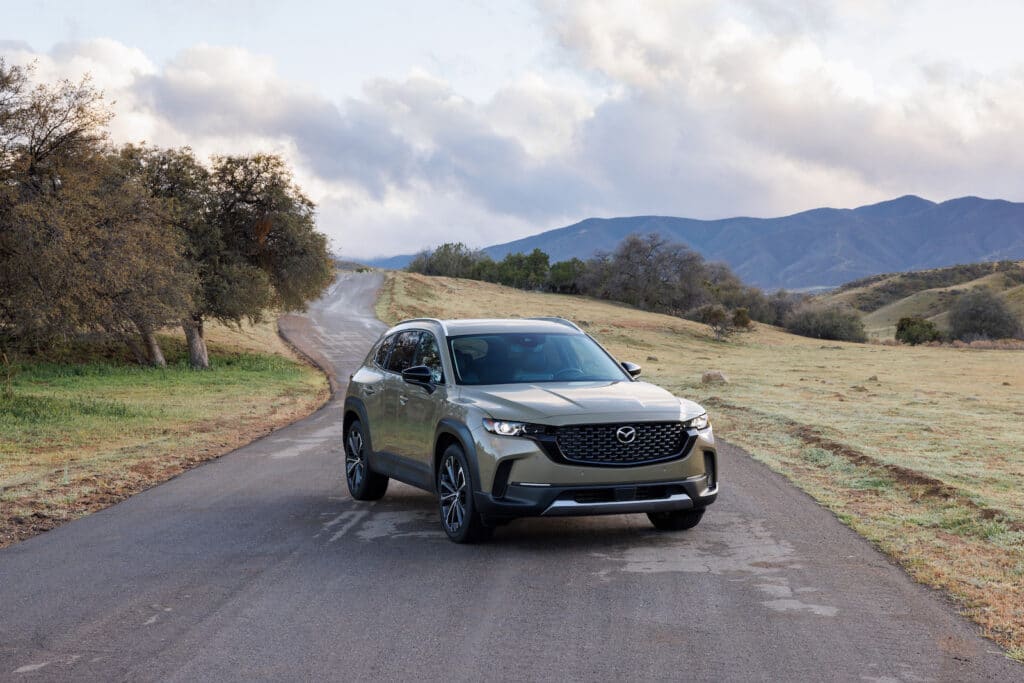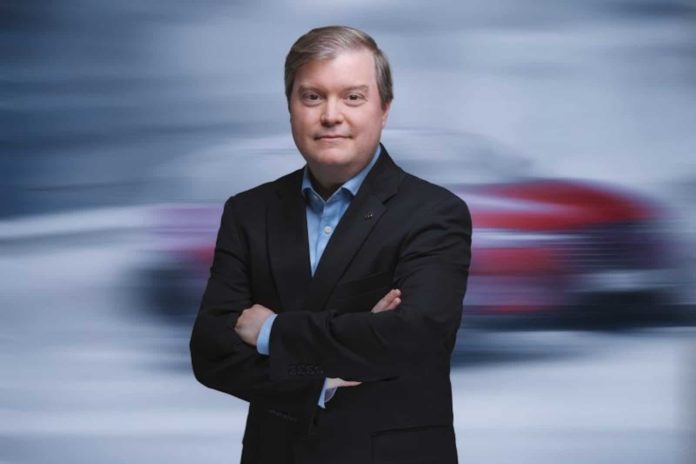With the introduction of the new CX-90, Mazda hopes to begin redefining its brand image. The flagship crossover is both bigger and more luxurious than the old CX-9 it replaces and could help position Mazda as a challenger not only to mainstream import competitors like Toyota, Hyundai or Kia, but more upscale brands like Volvo.
As one of the smallest mainstream brands in the U.S. market, Mazda has long struggled to carve out a clear identity, rather than living in the shadows of those bigger brands. The launch of the new, three-row crossover will be the biggest test yet for Jeff Guyton, the industry veteran appointed president and CEO of Mazda North American Operations in June 2021.
But the automaker has plenty of other challenges. It returned to U.S. manufacturing with last year’s opening of an assembly plant in Alabama operated in partnership with Toyota. And it’s launching its first-ever plug-in hybrid — an option on the CX-90 — as the first step in what Guyton calls Mazda’s “three phases of electrification.”
With a varied background that includes a bachelor’s degree in Arts and Asian studies, as well as a Masters in Business from the University of Michigan, Guyton has spent more than two decades with Hiroshima-based Mazda. That includes stints in Europe and Japan — aided by his ability to speak Japanese fluently, as well as Spanish and German.
Guyton, who this month celebrated his 56th birthday, spoke to TheDetroitBureau.com during a background briefing on the new CX-90 in Malibu, California.
TheDetroitBureau: The CX-90 is a big vehicle, and a rather bold one. How did you try to differentiate it from the old CX-9?
Jeff Guyton: The CX-9 was outstanding from a driving perspective. But the knock on it was that it was too small for some families and some uses. So it never really took off. CX-90 addresses a lot of the issues the CX-9 had with its package and it is more modern (even while) it’s still great to drive.

TDB: The new CX-90 seems to be the first Mazda in a while deserving to be called the brand’s flagship, Jeff.
Guyton: The starting point, when we were designing it, was to give you something to be proud of. I’m proud of the vehicle’s stance and proportion. It’s beautiful. And it’s clearly the biggest (and) most powerful car we’ve ever made. It’ll also be the most expensive car we’ve ever sold in the U.S. So, yeah, you could say it’s our flagship.
TDB: It seems to be targeting the luxury segment more than traditional (Mazdas). Was that a conscious decision?
Guyton: We’re not trying to be luxury. It won’t be that expensive. We are trying to be “premium” in terms of the customer experience, both at the dealership and in the vehicle. It comes back to the purpose of the brand: we want to enrich the lives of those people we serve, whether that’s our safety, or the design, or it’s fun to drive, or we treat you well in the dealership or when you have problem or when you’re shopping online.
TDB: The CX-90 is based off an all-new large vehicle platform. Will there be other products to follow? And will they come to the U.S.?
Guyton: What we’ve announced (are) four brothers, the CX-60, and 80, and the 70 and 90. They’re all different widths and lengths and they’re meant to appeal to all the different markets. We’re just planning the 70 and 90 for the U.S. and for North America. The 60 and 80 will not come here. They are more narrow and they’re intended for markets that have smaller, narrower roads.
TDB: You’ve got two powertrain options for the CX-90, including one you bill as the brand’s most powerful ever.
Guyton: I never felt CX-9 lacked for power but, in terms of the number on the label, it was less right. That’s why (the new mild hybrid) engine has 340 horsepower and also gets a 48-volt turbo boost, so you also feel the torque.
Hybrid v. BEV

TDB: What can you tell us about the plug-in hybrid, your first PHEV option? There’s a lot of reasons why plug-ins make sense. But you have this peculiar thing in the environmental movement where some folks say it has to be an EV or nothing.
Guyton: Well, we see are a lot of people coming into the showroom who are curious about EVs. Obviously, it’s an emerging technology and, obviously, there are growing pains with charging, and whatnot. We think there’s an opportunity, for a growing number of people, (with a plug-in) they can do all their daily driving in electric mode. And most can charge up at home or at work of someplace convenient. But if they want to drive, say, from LA to Las Vegas they won’t have any anxiety about where to find a charger (by switching to gas when the battery is drained).
TDB: But PHEVs have just not caught on with American motorists.
Guyton: I agree, but I don’t think we’ve missed the off-ramp there. I think we’re still approaching it. I think in the U.S. the plug-in will have its day. I think it’s day is coming (though) it’s a transitional technology towards an electric future.
TDB: So, do you see Mazda going 100% electric?
Guyton: We’re just 2% of the world’s auto supply and we sell in 130 countries. So, for us, we have to cater to all kinds of different technical solutions with a multi-technology approach.
TDB: Your first EV, the MX-30, has not exactly caught on, itself. Why? And what have you learned?
Guyton: In Europe, we sold actually quite a lot. But it is not the right size for the U.S. market. It’s much better for Europe and Japan. And, in that size vehicle it’s difficult to package a big battery, so we get chided for its 100-mile range. Most people will not have a problem in their daily drive with 100 miles. Perfectly acceptable. But that’s not the right way to look at it. People want more.

TDB: And you’ve come up with a way to give them more, using a Wankel rotary engine as a range extender on the MX-30. Will we see that option come to the U.S. and, if so, when?
Guyton: Right now, the priority for that product is Europe and Japan. So, there’s no plan to bring the Wankel (range-extender) here.
TDB: So, in terms of electrifying its line-up, where do you go next?
Big investment
Guyton: We’ve talked about three phases of electrification for Mazda. We’ve announced an $11 billion investment. Phase one will be the plug-in hybrid. Phase two will be battery-electric models (off existing platforms). Phase three will bring a dedicated, skateboard-kind of architecture in the second half of the decade.
TDB: Will you build any of those here? That would be critical to qualifying for the new EV incentive rules.
Guyton: We have not made those decisions. There’s still some clarity (needed on) the regulations. So, we’ll be looking at what we can do in Mexico or Alabama (where Mazda jointly operates a plant with Toyota).
TDB: Let’s wrap up by looking at the future. Mazda did well over the last couple years. But what about 2023 and beyond?
Guyton: Well, simply sustained growth and profitability (are the target). We want to head for 500,000 units in the U.S. over the next few years. (Up from 294,908 in 2022.)

